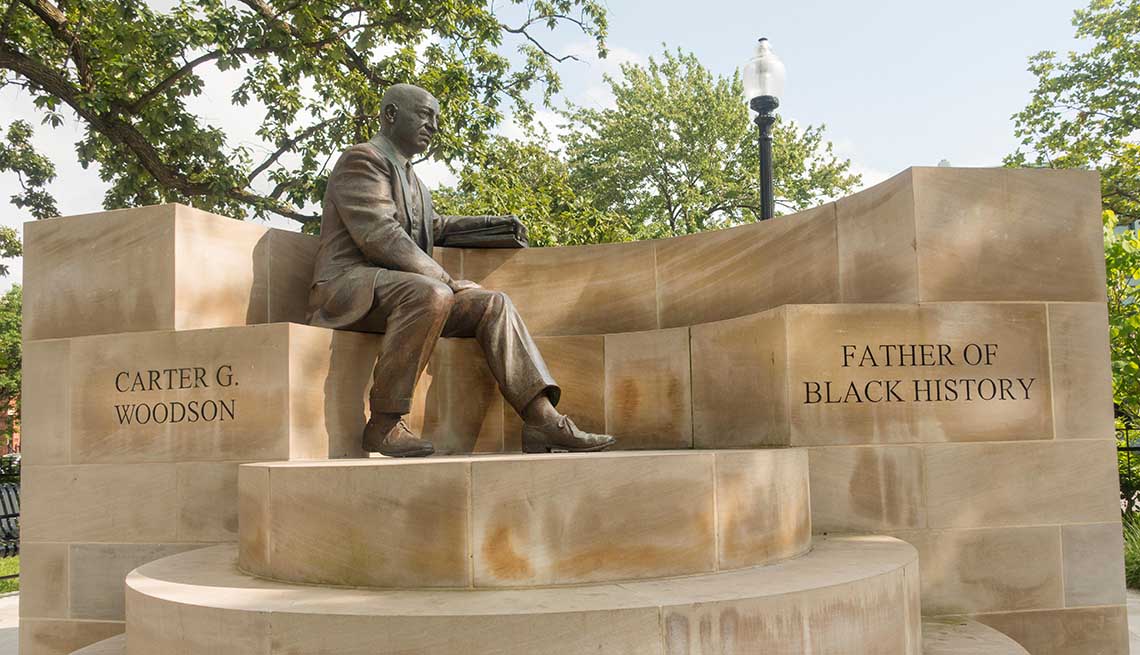
Carter g. Woodson advocated for honoring black history
- Select a language for the TTS:
- UK English Female
- UK English Male
- US English Female
- US English Male
- Australian Female
- Australian Male
- Language selected: (auto detect) - EN
Play all audios:

The scholar who became known as the father of black history didn't envision a different history for each race and ethnicity. Instead, what historian Carter G. Woodson saw was a missing
piece in the puzzle of humankind. And he worried that the artifacts and evidence of blacks in American culture would disappear if they weren't preserved, says Burnis Morris, the Carter
G. Woodson professor of journalism and mass communications at Marshall University in Huntington, West Virginia. "Woodson believed there was just one history, not a separate history for
blacks and whites and Asians, but one,” says Morris, author of _Carter G. Woodson: History, the Black Press, and Public Relations_ (University Press of Mississippi, 2017). “Woodson went
about correcting the record, and many of us believe it remains to be corrected. "Woodson got the world to confront this issue,” Morris says. A MISSING HISTORY Woodson came late to the
calling that would consume his adult life. He was born poor during the Reconstruction period in rural Virginia, one of nine children of formerly enslaved parents who were skilled workers but
uneducated. First, he had to help raise crops to feed his family, going to school only when the weather was bad. Then his family moved to West Virginia, where Woodson earned money as a coal
miner. Only at age 20 was he able to start high school. As he advanced in his collegiate studies through two bachelor's degrees, a master's and a doctorate, he saw that blacks,
classified as Negros in the 1900 census, were not included in the history books. Woodson began to worry that black culture was being ignored or misrepresented, Morris says. This Carter G.
Woodson mural, photographed in 2009 at 1625 9th St. N.W. in Washington, D.C., was removed during a renovation of the building near Woodson's longtime home. Kevin Harber / Flickr /
Wikimedia Commons In 1915, a couple of weeks after Chicago's celebration of the 50th anniversary of the abolition of slavery, Woodson and four colleagues founded the Association for the
Study of Negro Life and History, later headquartered in his own Victorian townhouse in the District of Columbia's Shaw neighborhood. A little more than a decade later, in 1926, Woodson
had the idea of combining two birthdays already widely celebrated among black Americans — Feb. 12 for President Abraham Lincoln and Feb. 14 for abolitionist Frederick Douglass — into Negro
History Week, says Daryl Michael Scott, a history professor at Howard University in Washington and a former president of what is now the Association for the Study of African American Life
and History. Scott called Woodson a public relations genius. "Woodson was very clever,” Scott says. “He built up on two preexisting celebrations. Black Americans had been celebrating
Lincoln's birthday since his assassination, mostly with the Republican Party. Then when Douglass died in 1895, his birthday became an event. Then it gets transferred into a week.
Woodson changed the script." HONORING BLACK INFLUENCE Black activism in the late 1960s, starting with the Black United Students at Kent State University in Ohio, helped transform
Woodson's week into a month. President Gerald Ford made the expansion official in 1976 with a presidential message in conjunction with the nation's bicentennial.
